Related Research Articles

Audi AG is a German automotive manufacturer of luxury vehicles headquartered in Ingolstadt, Bavaria, Germany. As a subsidiary of its parent company, the Volkswagen Group, Audi produces vehicles in nine production facilities worldwide.

Opel Automobile GmbH, usually shortened to Opel, is a German automobile manufacturer which has been a subsidiary of Stellantis since 16 January 2021. It was owned by the American automaker General Motors from 1929 until 2017 and the PSA Group, a predecessor of Stellantis, from 2017 until 2021. Opel vehicles are sold in Britain under the Vauxhall brand. Some Opel vehicles were badge-engineered in Australia under the Holden brand until 2020 and in North America and China under the Buick, Saturn, and Cadillac brands.

The Volkswagen Jetta is a compact car/small family car manufactured and marketed by Volkswagen since 1979. Positioned to fill a sedan niche above the firm's Golf hatchback, it has been marketed over seven generations, variously as the Atlantic, Vento, Bora, City Jetta, Jetta City, GLI, Jetta, Clasico, and Sagitar.

The Volkswagen Passat is a series of large family cars manufactured and marketed by the German automobile manufacturer Volkswagen since 1973, and now in its eighth generation. It has been marketed variously as the Dasher, Santana, Quantum, Magotan, Corsar and Carat. The successive generations of the Passat carry the Volkswagen internal designations B1, B2, etc.

The Brass Era is an American term for the early period of automotive manufacturing, named for the prominent brass fittings used during this time for such things as lights and radiators. It is generally considered to encompass 1896 through 1915, a time when these vehicles were often referred to as horseless carriages.
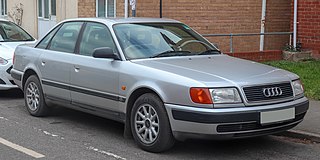
The Audi 100 and Audi 200 are primarily mid-size/executive cars manufactured and marketed by the Audi division of the Volkswagen Group. The car was made from 1968 to 1997 across four generations (C1–C4), with a two-door model available in the first and second generation (C1-C2), and a five-door model available in the last three generations (C2–C4).

The Audi 80 is a compact executive car produced by the Audi subdivision of the Volkswagen Group across four generations from 1966 to 1996. It shared its platform with the Volkswagen Passat from 1973 to 1986 and was available as a saloon, and station wagon — the latter marketed by Audi as the Avant. The coupé and convertible models were not badged as members of the range but used a derivative of the same platforms.

The Stanley Motor Carriage Company was an American manufacturer of steam cars; it operated from 1902 to 1924. The cars made by the company were colloquially called Stanley Steamers, although several different models were produced.

The Nissan Sentra is a series of automobiles manufactured by the Japanese automaker Nissan since 1982. Previously subcompact in classification, for the model year 2000 it was reclassified as a compact car. Until 2006, Sentra was a rebadged export version of the Japanese Nissan Sunny, but since the 2013 model year, Sentra is a rebadged export version of the Sylphy. The Sentra nameplate is not used in Japan. Many other countries in South America sell their versions of the Sunny as the Sentra. In Mexico, the first three generations of the Sentra were known as the Nissan Tsuru, and the B13 model was sold under that name until 2017, alongside the updated models badged as Sentra.
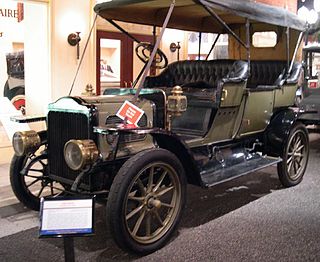
A steam car is a car (automobile) propelled by a steam engine. A steam engine is an external combustion engine (ECE) in which the fuel is combusted outside of the engine, unlike an internal combustion engine (ICE) in which fuel is combusted inside the engine. ECEs have a lower thermal efficiency, but carbon monoxide production is more readily regulated.

Grout Brothers was a manufacturer of steam-powered automobiles in Orange, Massachusetts. The three brothers, Carl, Fred and C.B. were set up in business by their father William L., who had made sewing machines under the New Home name in partnership with Thomas H. White. The early cars were sold under the New Home name.

The Audi Coupé was a liftback coupé version of the Audi 80, first shown in 1980. The bodywork was shared with the Audi Quattro. The second generation Coupé arrived in late 1988 and was based on the B3 Audi 80, albeit with a different suspension. The Coupé remained in production until the end of 1996 and spawned the Audi S2 series of sports versions. A convertible model arrived in 1991, called simply the Cabriolet, and remained in production until 2000.

The Henry J was an American automobile built by the Kaiser-Frazer Corporation and named after its chairman, Henry J. Kaiser. Production of six-cylinder models began in July 1950, and four-cylinder production started shortly after Labor Day, 1950. The official public introduction was on September 28, 1950. The car was marketed through 1954.
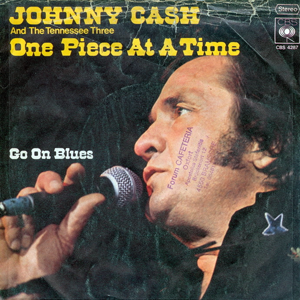
"One Piece at a Time" is a country novelty song written by Wayne Kemp and recorded by Johnny Cash and the Tennessee Three in 1976. It was the last song performed by Cash to reach No. 1 on the Billboard Hot Country Singles chart and the last of Cash's songs to reach the Billboard Hot 100, on which it peaked at No. 29.
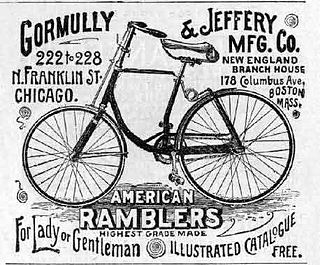
The Rambler was an American bicycle brand manufactured by the Gormully & Jeffery Mfg. Co., in Chicago from 1878 to 1900. This bicycle brand was created by Thomas B. Jeffery and was the predecessor to Jeffery's Rambler automobile.
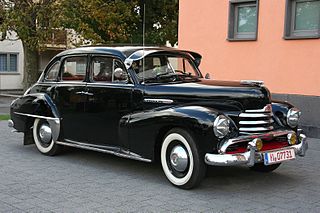
The Opel Kapitän is a Luxury car made in several different generations by the German car manufacturer Opel from 1938 to 1970.
David Ian Crown is an English retired professional footballer who played as a forward in the Football League, most notably for Cambridge United and Southend United. He also played for Reading, Gillingham, Brentford, Portsmouth and Exeter City. He later player-managed Purfleet in non-League football and after retiring, was assistant manager at former club Southend United. A Reading-based Sunday league team, DC Steamers, is named in Crown's honour.

The Subaru Tribeca is a mid-size crossover SUV made from 2005 to 2014. Released in some markets, including Canada, as the Subaru B9 Tribeca, the car derives its name from the Tribeca neighborhood of New York City. Built on the Subaru Legacy platform and sold in five- and seven-seat configurations, the Tribeca was intended to be sold alongside a slightly revised version known as the Saab 9-6X. Saab, at the time a subsidiary of General Motors (GM), abandoned the 9-6X program just prior to its release subsequent to GM's 2005 divestiture of its 20 percent stake in FHI.
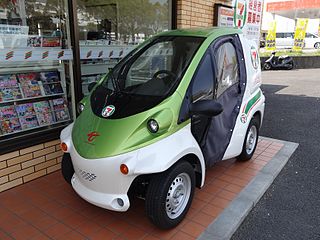
The Toyota COMS is a single-seater electric microcar produced by Toyota Auto Body. The first generation was introduced by Araco in 2000. In 2012, Toyota Auto Body launched a second generation. COMS is an acronym for Chotto Odekake Machimade Suisui.
References
- ↑ 100 Years of the American Auto Millennium Edition,. Publications International. 1999. p. 24.
- ↑ 100 Years of the American Auto, p. 19